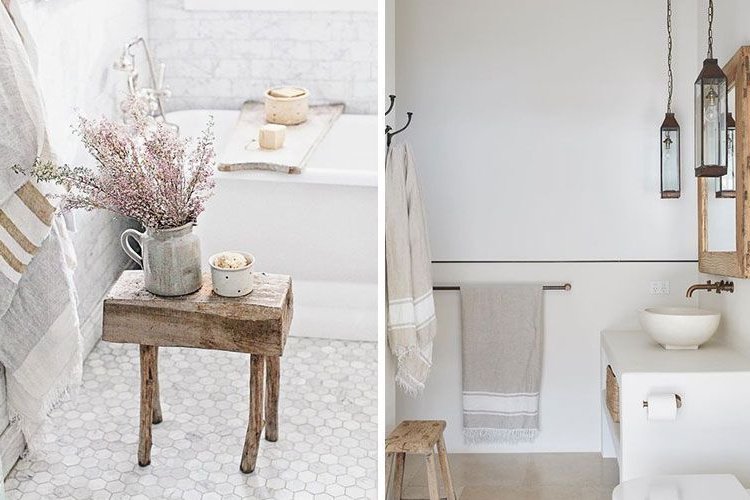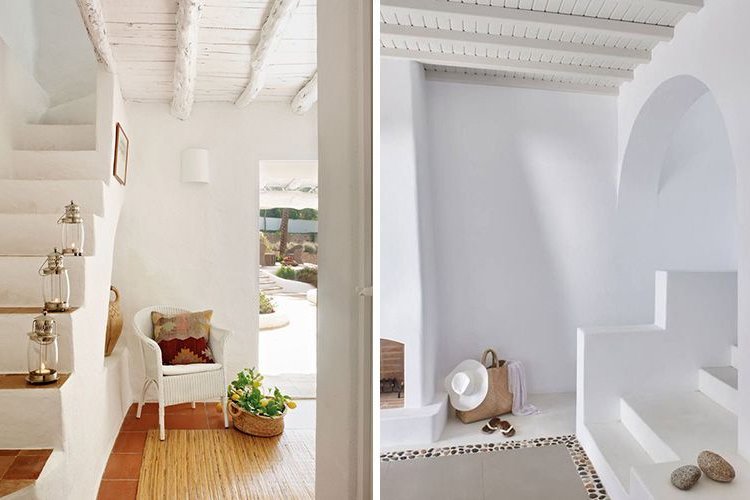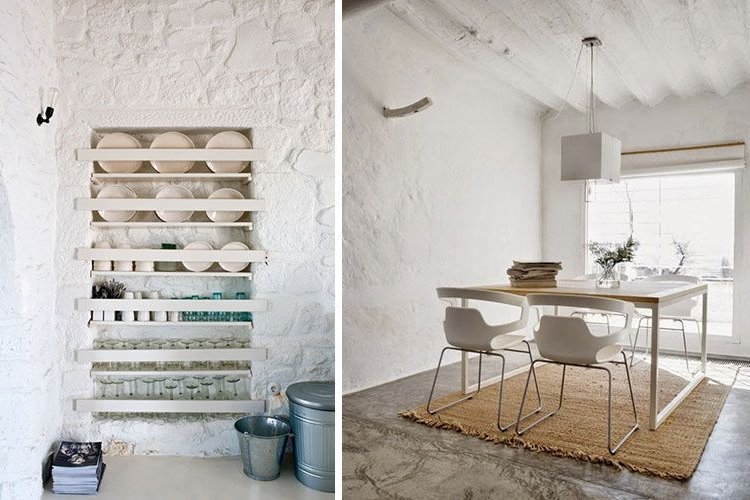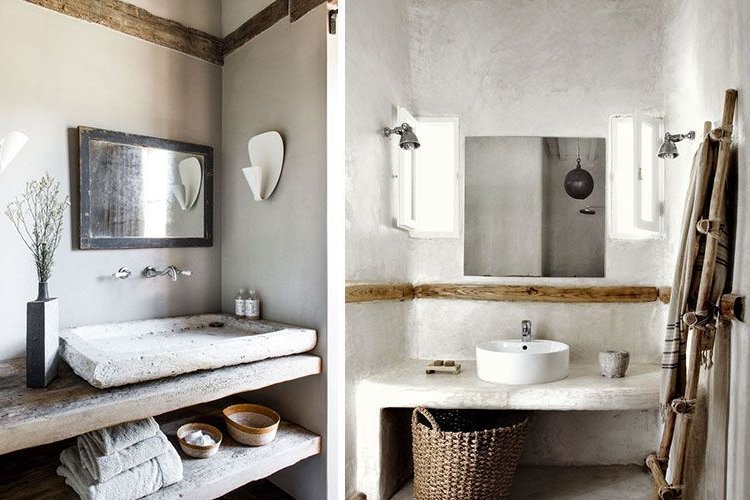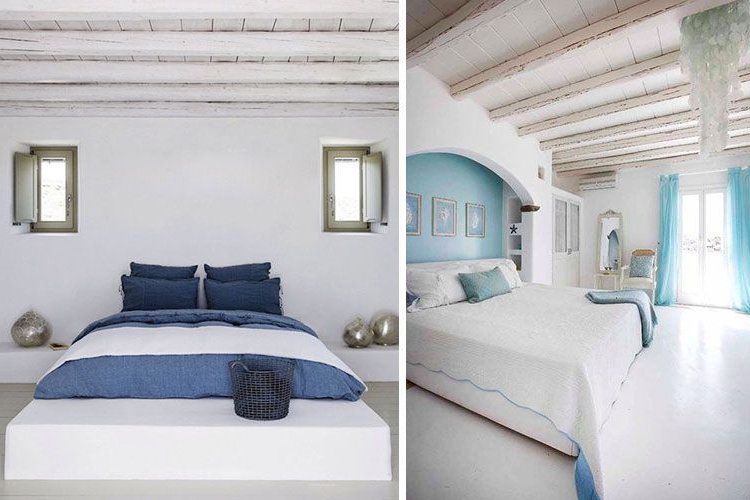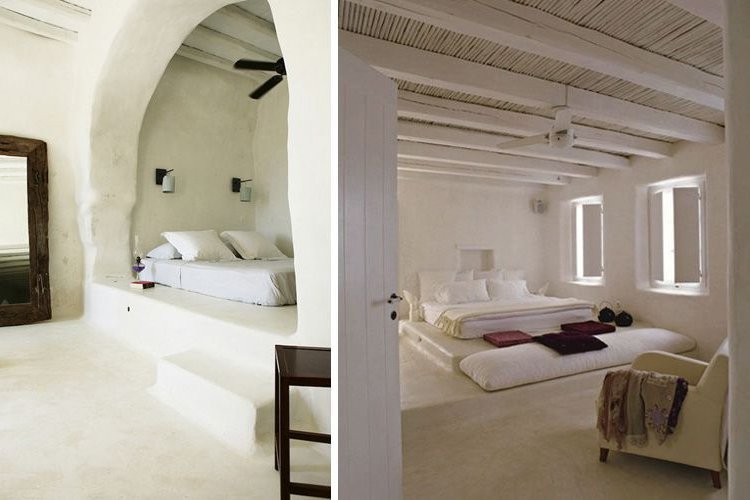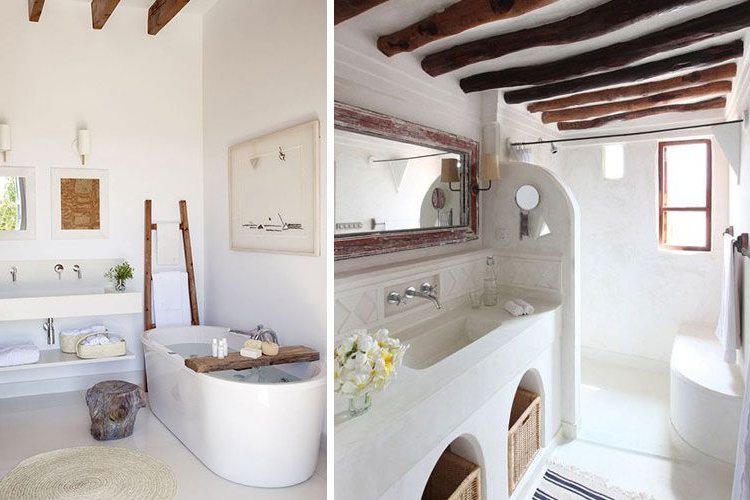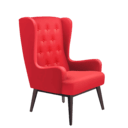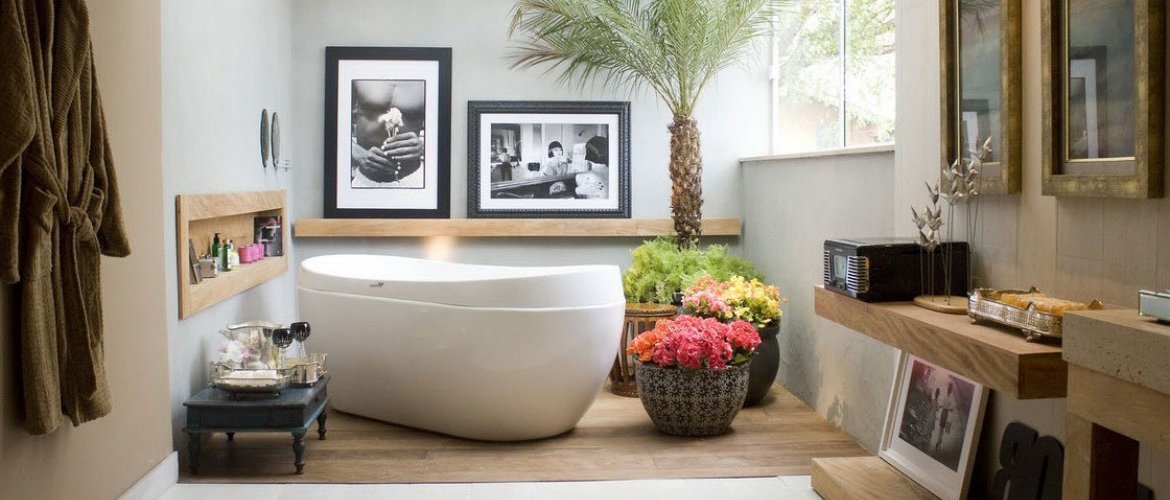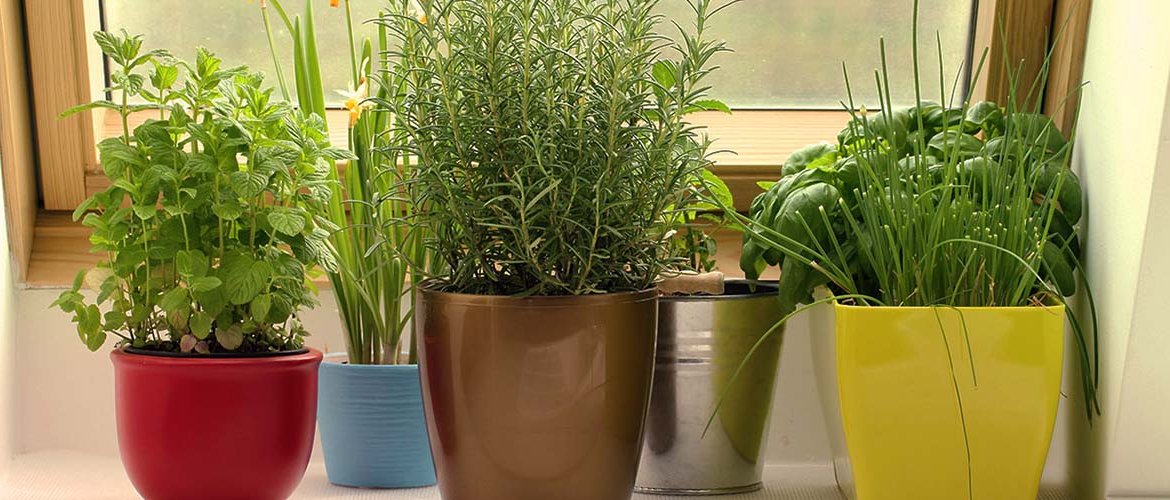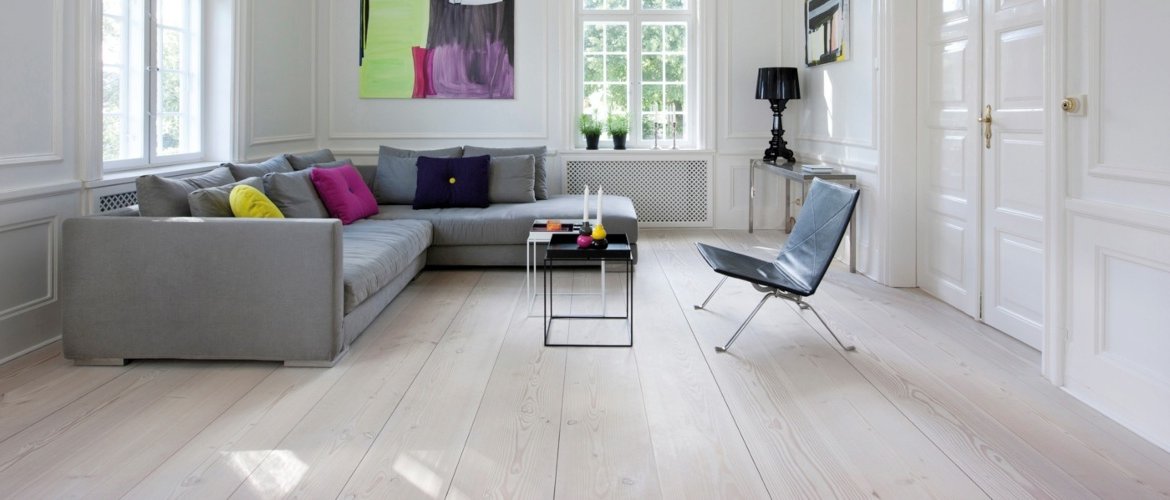The Mediterranean style in 10 keys
It has been a long time since we last visited this section and today we do it to take up again one of our most popular decorative styles: the Mediterranean style.
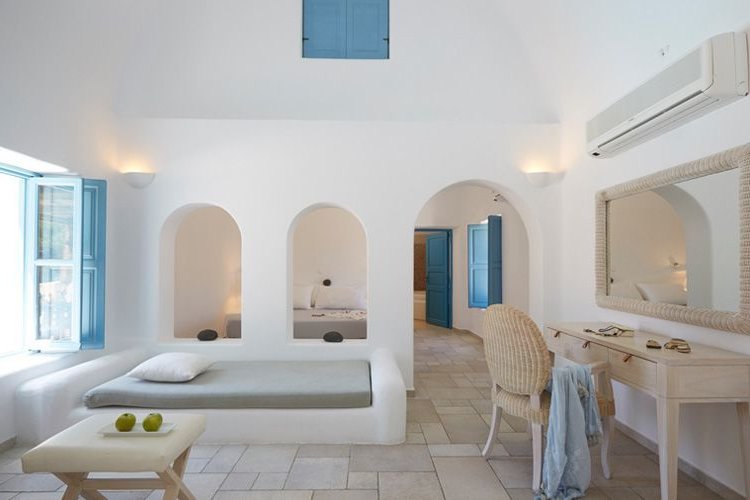
Actually, the definition of Mediterranean style could include many variants, since the Mediterranean Sea is shared by countries as different as Tunisia or Greece. However, in order to narrow it down a bit, and given that there is already a so-called "Arab style", we will focus on the "European" Mediterranean style, that is, the one shared mainly by Spain, Italy and Greece.
Although this style has a little bit of rustic, a little bit of modernist and a little bit of minimalist, it actually has some defining characteristics that distinguish it from others. Let's go with them!
1. Exposed beams
It is usually a constant in this type of properties. This characteristic is shared with the rustic and modernist aesthetic floors, but in this case the beams are usually made of lighter wood, or painted white or the color of the sea.
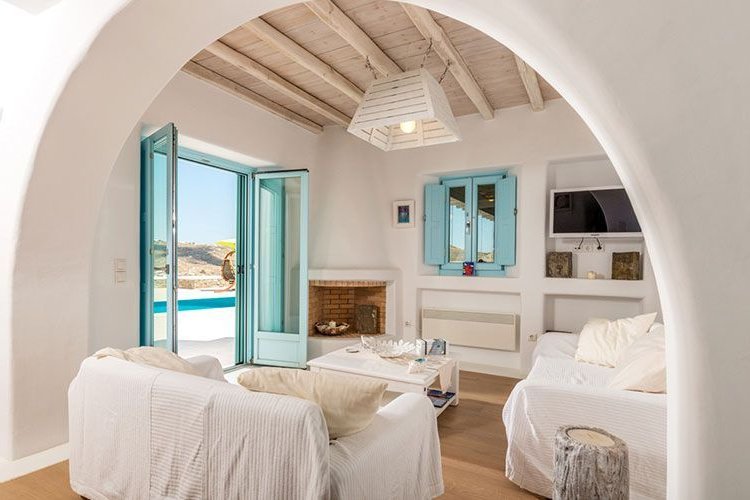
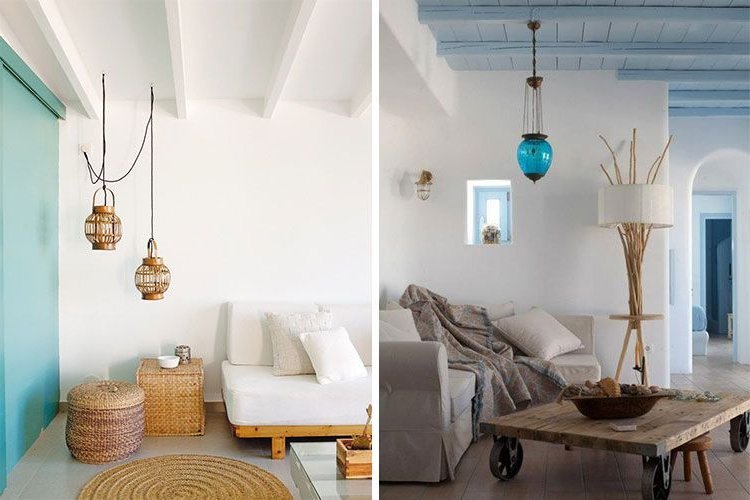
In addition to the typical shingles, very often in this style it is chosen to fill the vaults between joists with chamizo or cane, either in its natural tone or in white.
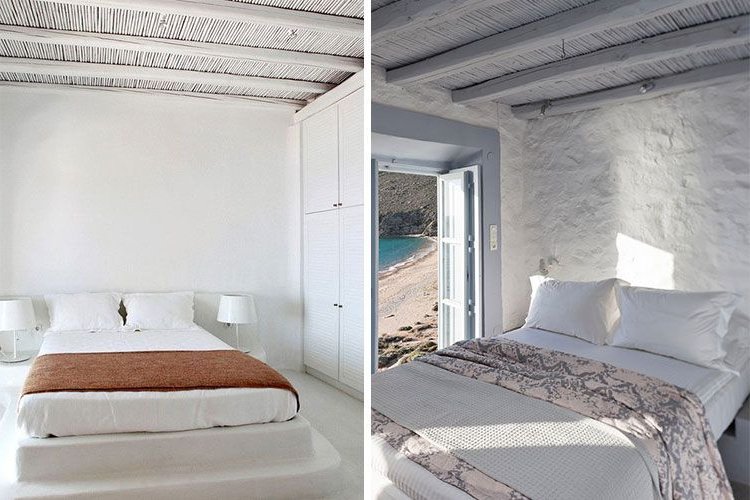
2. Whitewashed walls
Although in its more modernized version the walls are usually smooth, it is a typical characteristic of this style to have whitewashed walls, with bellies, bulges and protrusions that give it that "handmade" aesthetic.
In any case, no matter how they are made, white will be the predominant color.
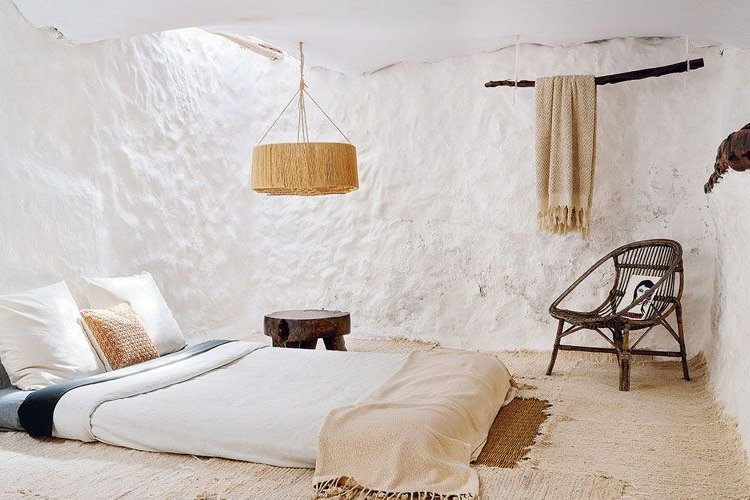
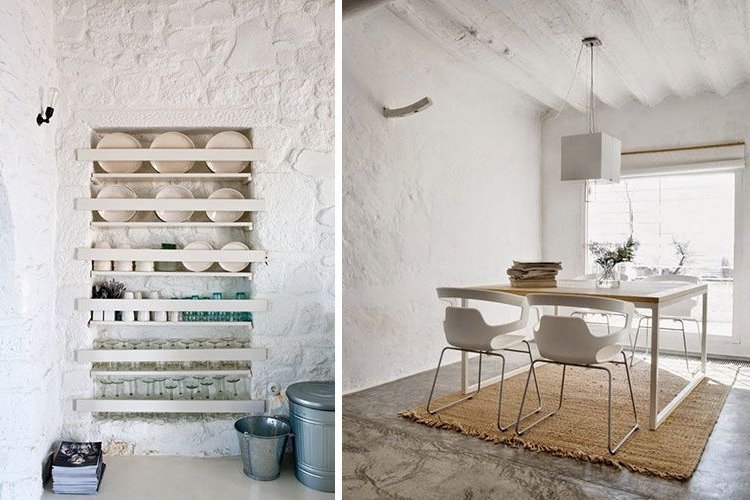
3. Sand and sea colors
The combination of white, beige and blue colors are the most common in this style. They represent the nature of the environment, surrounded by white or slightly beige sands, a blue sky and a powerful sea that goes from turquoise to marine with astonishing ease.
While white is omnipresent, sand tones and blues are often added in small but carefully chosen touches.
Beiges and sands are very common in the complements: lamps, carpets, the wood of the tables and bed linen.
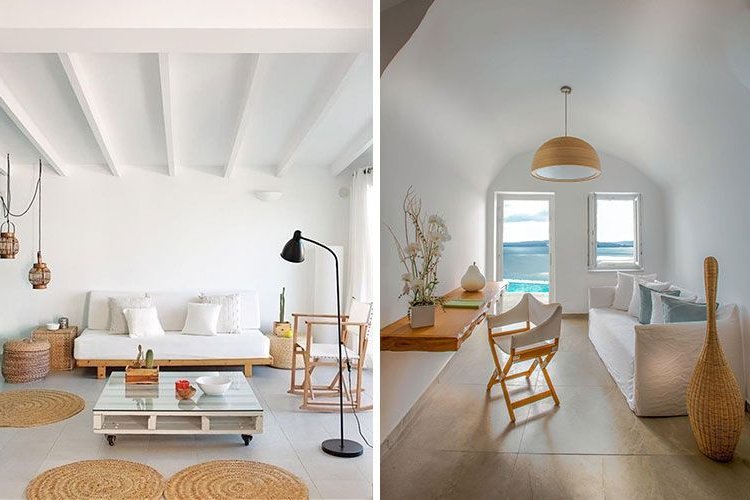
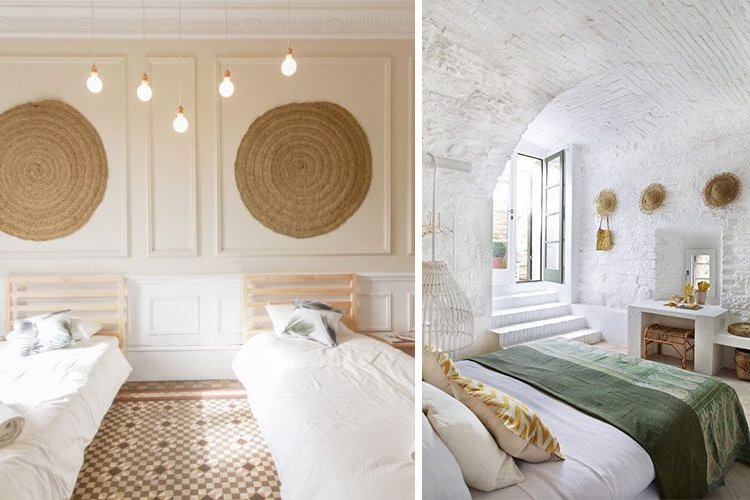
On the other hand, the blue color is usually added to selected structural elements, such as beams, doors and windows.
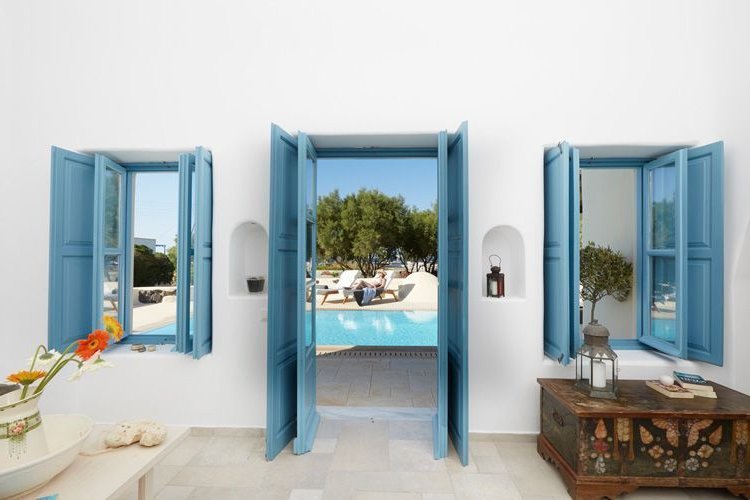
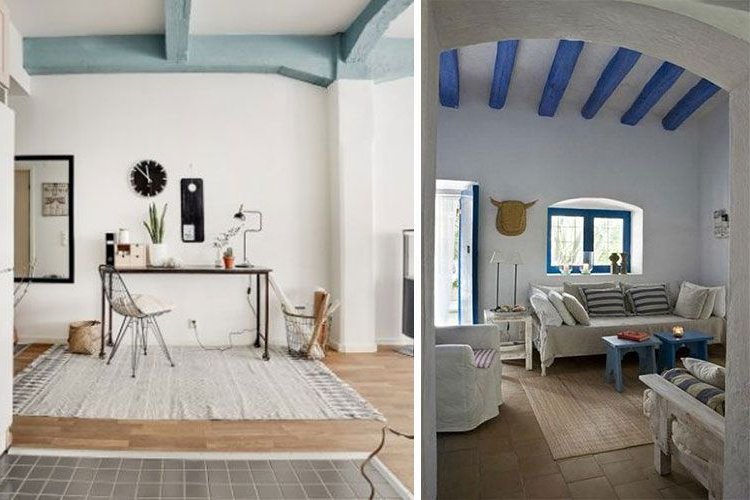
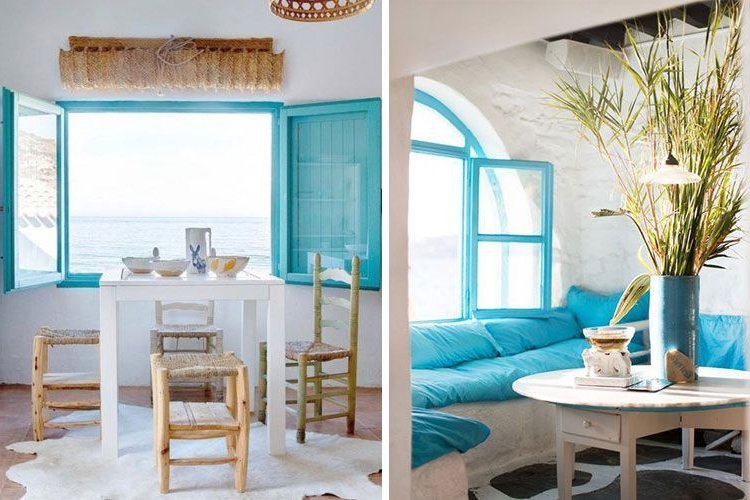
4. Rounded shapes
A very typical characteristic of this style in its more traditional version and that it shares with the Feng Shui guidelines are the organic forms and the absence of straight corners in the construction.
Arches and corners are shaped in this way to create a soft, soothing aesthetic.
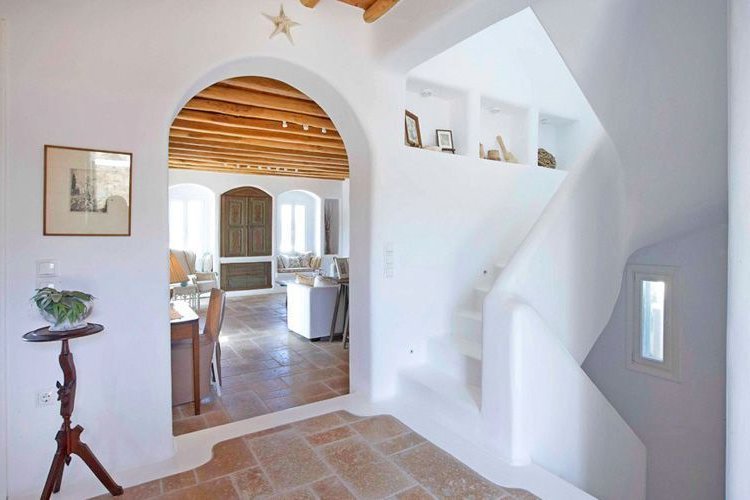
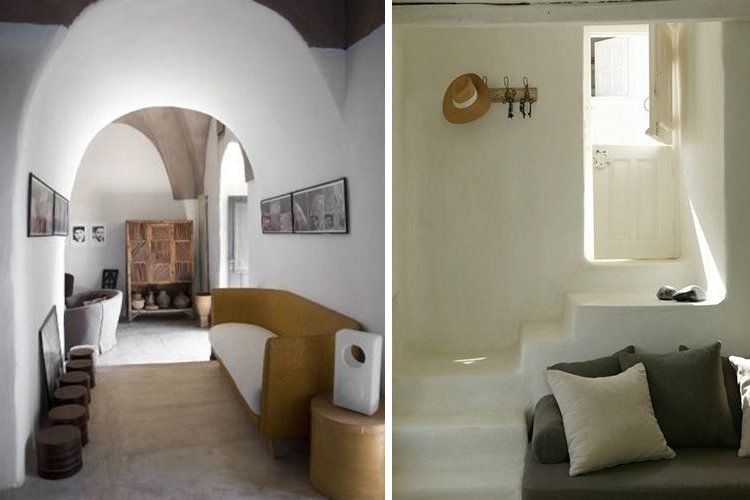
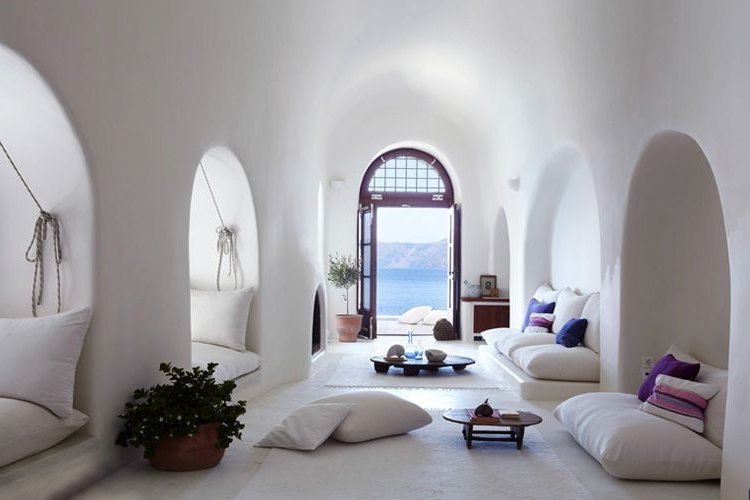
5. Minimalism
The Mediterranean style is not overloaded at all. Sometimes it surprises the little presence of ornamental elements, but in general it is due to two reasons: the evocation of tranquility and relaxation, typical characteristic of the Mediterranean sea, calm, without big waves, and the choice of the decorative focus on the strength of the construction itself (walls, ceilings, floors, windows), which are the real protagonists of this style. The rest, only accompanies...
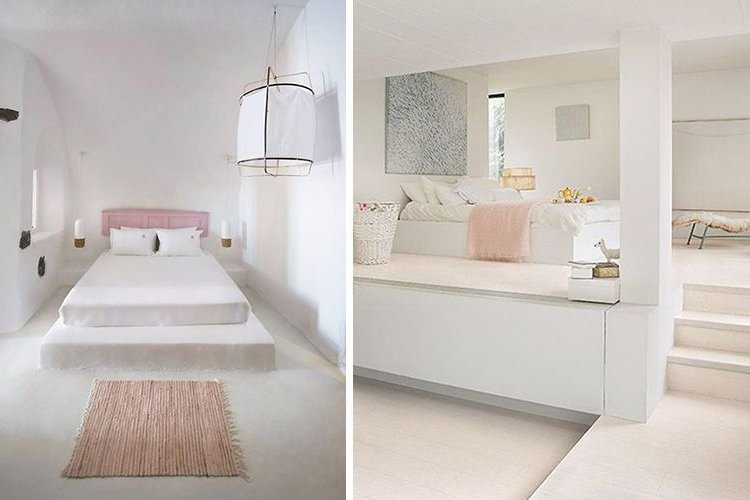
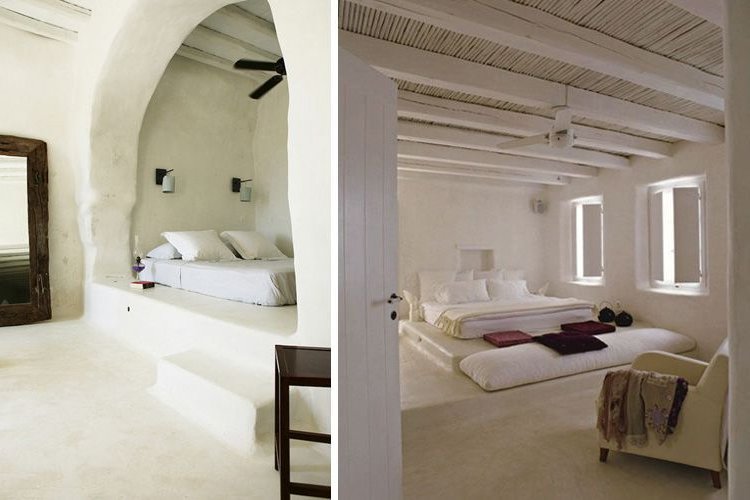
6. Stone floors in light tones
Unlike urban homes, where laminate or wood floors win by a landslide, in Mediterranean-style homes, white and light stone floors are very characteristic, precisely because of their proximity to the sea, as they are easy to clean and perfectly withstand humidity.
What they are usually light tones: whites, very soft beiges and only occasionally gray concrete, this type of flooring contrasts with those of indoor country houses, where slabs and terrazzo are usually more common.
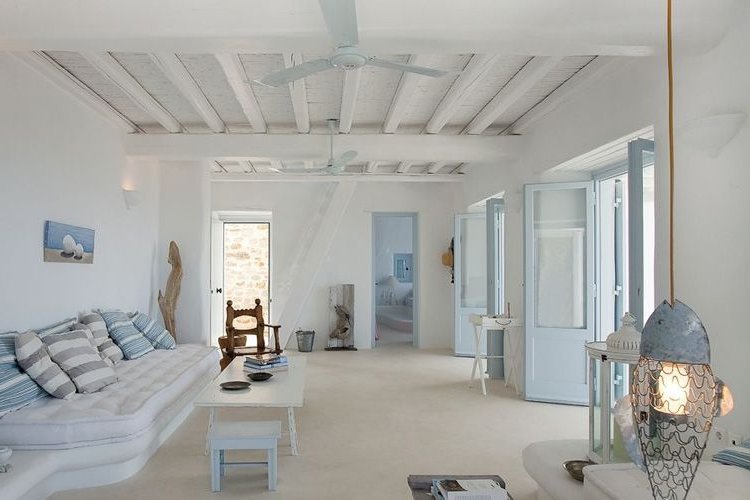
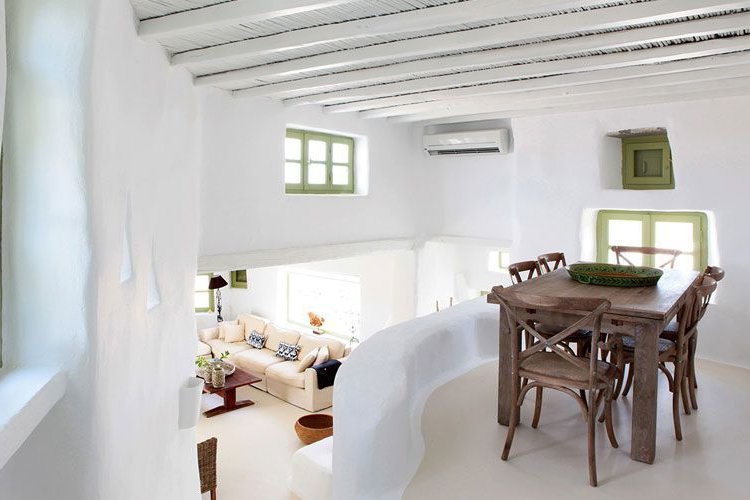
7. Absence of blinds
Neither blinds nor curtains, so typical of urban dwellings, are very common in this style. Instead, we find wooden shutters and mats to protect from heat and light.
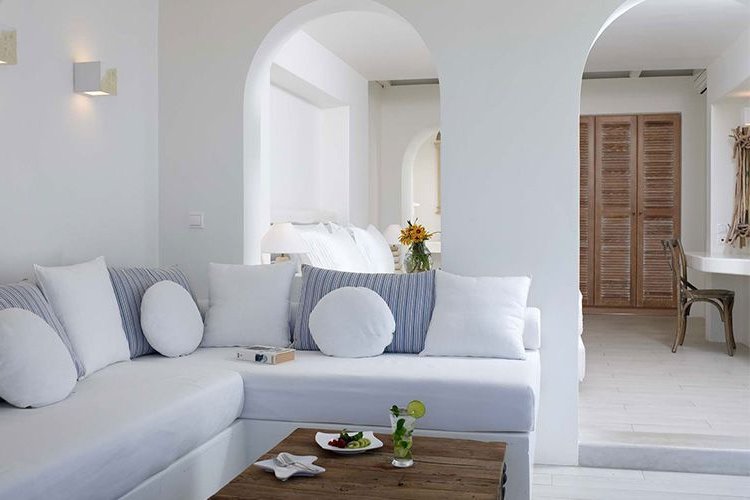
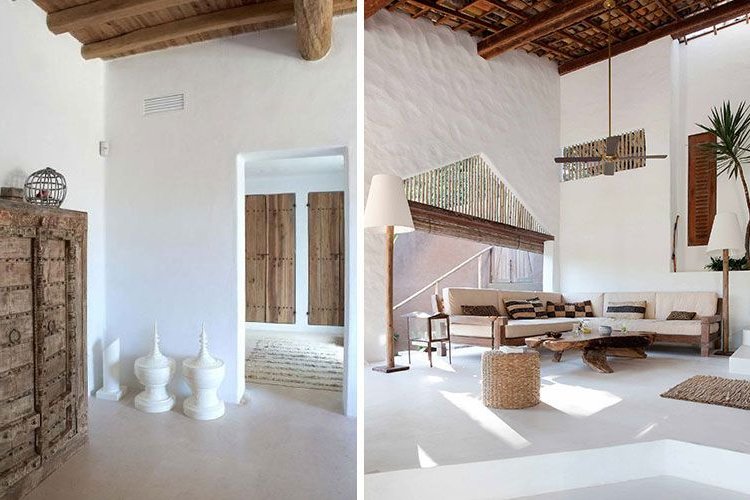
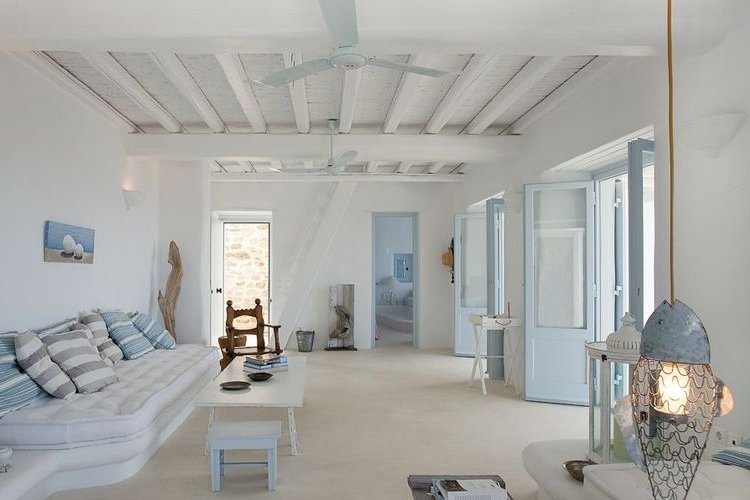
8. White bathrooms with sinuous shapes
We forget the angles of the screens, rectangular sinks or showers to use, to focus on bathrooms that combine white and wood, with stone sinks and presence of shelves that, along with the exposed beams of some of them give the Mediterranean character to this room.
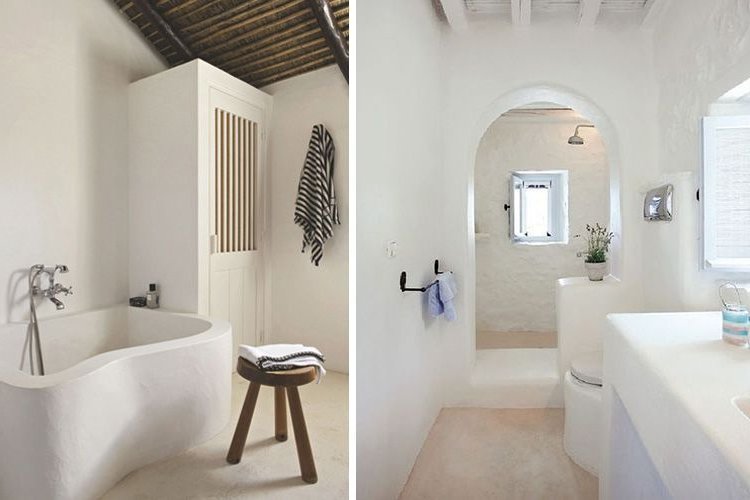
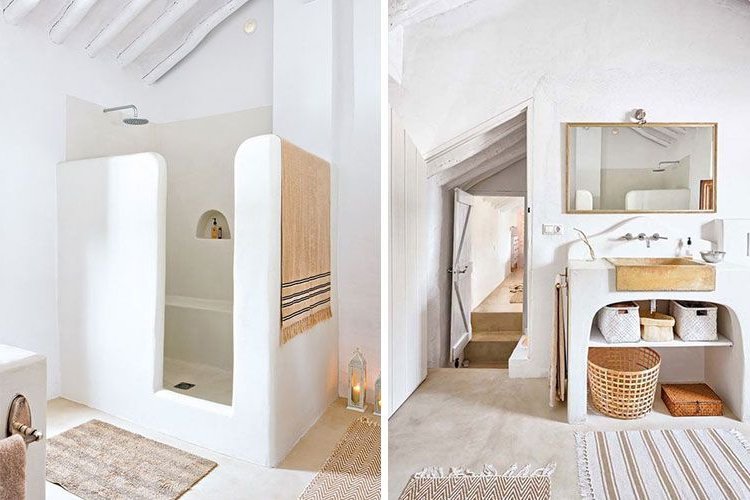
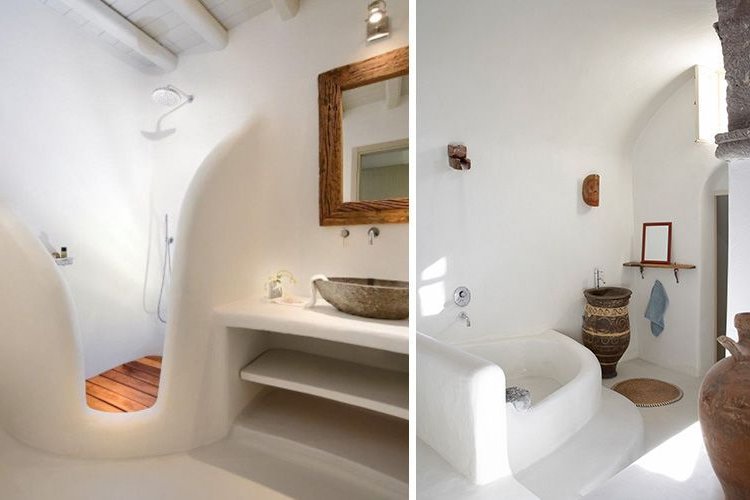
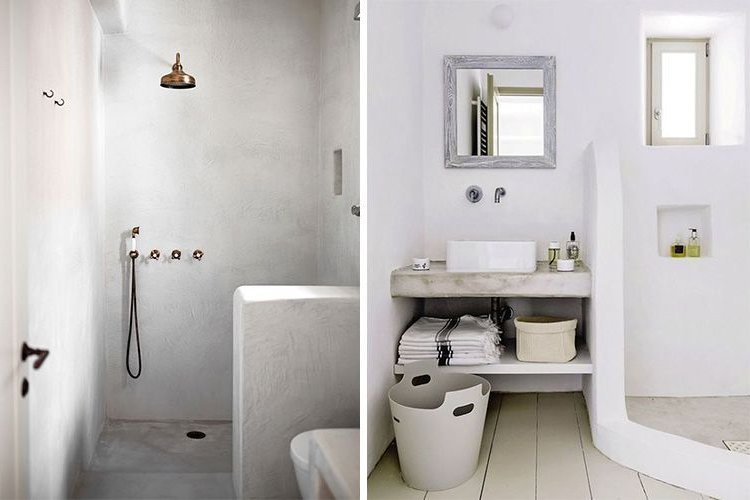
9. Hydraulic tile
While in terms of bathrooms the more traditional aesthetics of light-colored floors, whitewashed walls and rounded shapes are common, it is also very typical, especially in the more modern and urban versions, to have some type of hydraulic tile (very characteristic of Mediterranean areas such as the Valencian or Catalan coast), both in bathrooms and kitchens.
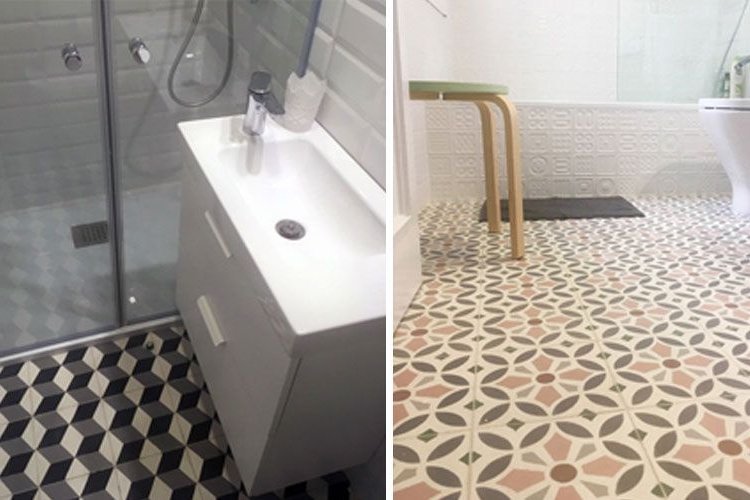
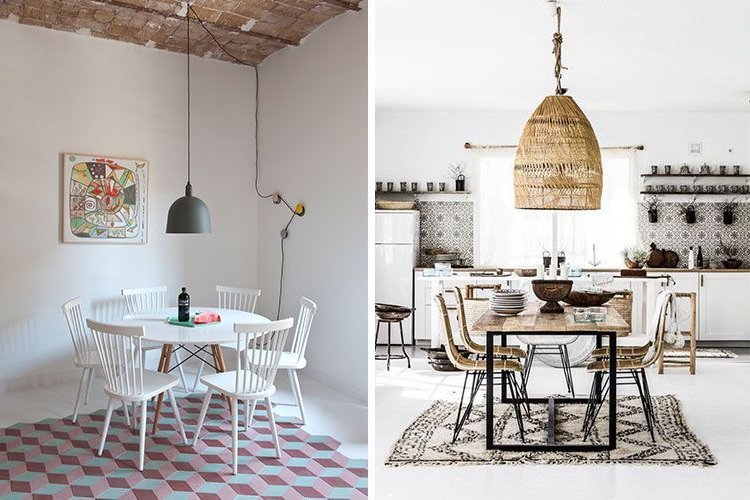
10. Natural materials for accessories
The presence of elements made of natural materials, such as linen, wicker and rattan, jute or wood are a constant in this type of style. Rattan lamps hanging from the ceiling, straw hats adorning the wall, wicker baskets as storage elements, wooden frames for mirrors and circular jute rugs are vivid examples of this style.
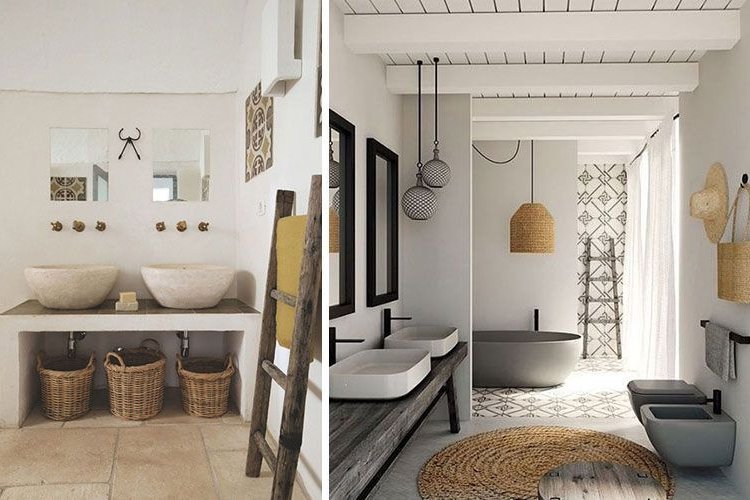
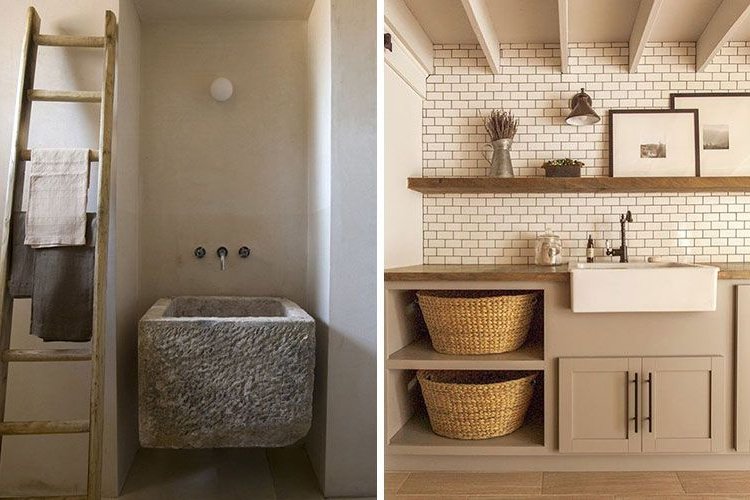
Do you dare to import the Mediterranean style to your home? As you may have seen, it is a charming and very close style, which delights any inhabitant of those coastal areas so blue, so calm and so relaxing as the Mediterranean coast. We leave you with some more images for your enjoyment :)
